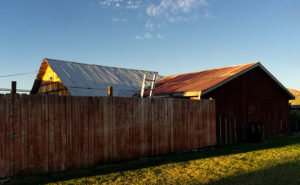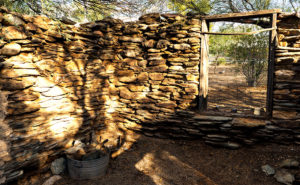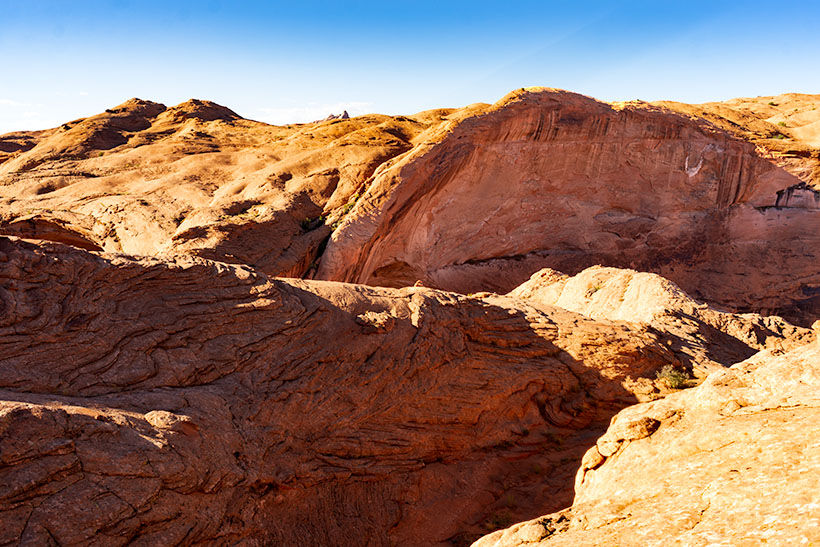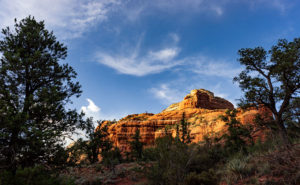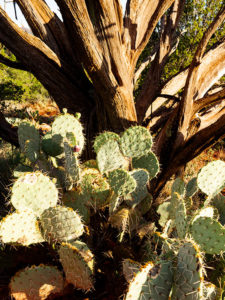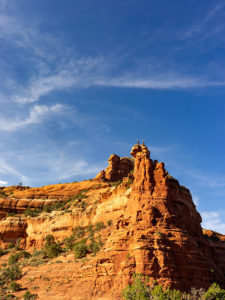♬ Get your kicks ♪
On Interstate 40 ♫
Well, that didn’t work; it’s not musical and doesn’t even rhyme. I suppose I shouldn’t try to mess with Bobby Troup’s song. I haven’t any musical talent anyway. My grandmother repeatedly told me, “You couldn’t carry a tune in a bushel basket.” The only thing I can play is the radio … while I’m driving, and when I drive across northern Arizona, that 1946 song inevitably pops into my head. Everybody from Bing Crosby, Chuck Berry, to the Cramps, have recorded it, so the tune has legs.
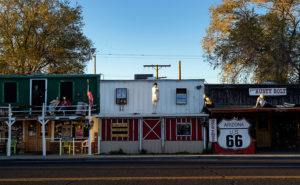
The reason that song has become an earworm in my brain is that Queen Anne and I drove two and a half hours to Seligman for this month’s photo shoot and we never left Yavapai County. For fifty miles, Route 66 runs along the northern border of our county—from Yampai to Ash Fork—and Seligman is at the west end of the most extended active section.
I’ve already recalled some of my personal experiences traveling cross-country on US 66, so I don’t want to be your grandpa continually retelling the same stories. But for the next generations, I’ll summarize some of the road’s highlights. Completed in 1926, U.S. Route 66 was one of the first paved highways across the west. It ran from Chicago to Santa Monica and provided an economical alternative to train travel. It was known as the Will Rodgers Highway, Main Street America, and the Mother Road. During the Dust Bowl and Depression era, thousands of migrants traveled west on the highway in search of a new life, a story that John Steinbeck captured in his epic novel Grapes of Wrath. My generation grew up watching Route 66 on a black and white 17” TV. The show’s two male characters—Martin Milner and George Maharis—traveled across the country in a Corvette. Their travels involved but weren’t limited to 66, and no one questioned their sexual orientation back then. The show turned the highway into a symbol of escape and adventure and permanently linked the Corvette to Route 66. (Incidentally, the show’s theme song made Billboard’s top 30 list.) The building of the Interstate System killed Route 66. The freeways went around towns and eliminated stop lights and speed traps. Without Federal money, states abandoned the road and began digging it up.
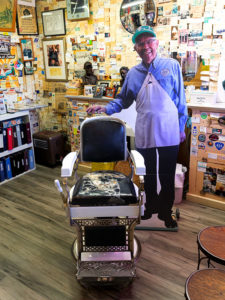
In 1978 when Interstate 40 opened and bypassed Seligman, the town’s commerce disappeared, and that put the town’s existence in jeopardy. But the town’s barber administered CPR. Angel Delgadillo met with representatives from other affected communities, and they formed an organization to turn things around. They worked to make the old US 66 a Historic Highway. Within a year, the association successfully lobbied the Arizona State Government to declare the section between Kingman and Seligman a Historic Highway, with parts from Ash Fork to California added later. After that, other states followed our example, and they tagged sections of the remaining road as historic.
The nostalgia caught on, and soon gift shops were selling Route 66 kitsch and memorabilia. Each year, the Historic Route 66 Association organizes a Fun Run. On the first weekend in May over 800 cars gather in Seligman for a car show in the morning before driving en masse to Kingman for the night. The next day, they continue to Needles. Most of the participants are of my generation and are driving cars they wish they had in high school. 2019’s annual run will be the 32nd year.
On our Seligman visit, we saw several businesses competing for customers by displaying memorabilia and vintage cars out front. Of the samples we saw, this one stood out. It’s the Rusty Bolt Saloon and—along with the signs and flags—they added mannequins to their building. I’ll tell you that when you drive by, you think there’s a wild party going on here. I took this shot early in the morning as the sun came up and I liked how the statues stood out in the sun. The other advantage to shooting that early is the lack of tour buses parked along the sidewalk.
You can see a larger version of Rusty Bolt on its Web Page by clicking here. I hope you enjoy viewing this week’s post and come back next week when we return to Seligman and more photos.
Until next time — jw

